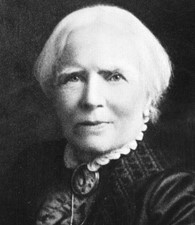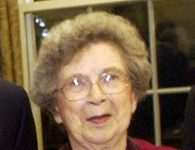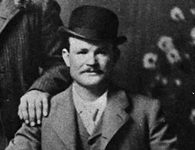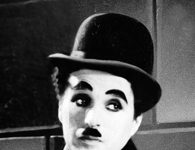When Elizabeth Blackwell was born in 1821, there were no formally trained female physicians in the Western world. But Blackwell graduated first in her class, established a hospital and medical school, and practiced medicine until she was almost 90. By the time she died, there were 7,000 female doctors in the United States alone.
Elizabeth Blackwell’s Early Days
Elizabeth Blackwell was born on February 3, 1821, in Bristol, England. She grew up in a family of nine siblings; her father, Samuel Blackwell, encouraged his daughters to get a good education.
When Elizabeth was young, the Blackwell family moved to the United States. Mr. Blackwell, a highly religious and moral man, fought for abolishing slavery, further instilling a sense of equal rights into his children. He died in 1838, leaving his wife, Hannah Blackwell, to support the large family.
To help her mother, Blackwell and her sister opened a small private school. However, Blackwell found her career as a teacher to be stultifying and craved more intellectually challenging work.
Inspiration came when Blackwell was tending to a dying friend who told her that her treatment had been difficult with male doctors. She encouraged Blackwell to consider a career as a physician, citing Blackwell’s intelligence and compassion.
Blackwell was instantly determined to get her medical degree, but getting into school would prove a daunting challenge as no schools took a female applicant seriously.
Ultimately, Blackwell was only admitted to one school: Geneva Medical College in New York. The admissions board felt it could not turn down a qualified applicant, and allowed the student body to vote on her acceptance. The students voted unanimously in her favor, thinking that the vote in question was a gag.
Sources in this Story
- Spartacus Educational: Elizabeth Blackwell
- National Library of Medicine: Elizabeth Blackwell
- NNDB: Elizabeth Blackwell
- NewYork-Presbyterian/Lower Manhattan Hospital
- Biography.com: Elizabeth Blackwell Biography
- Hobart and William Smith Colleges: The Blackwell Award
Notable Accomplishments
Difficult as it was to receive admission to a medical school, Blackwell was faced with many obstacles in the classroom. For example, the professor of her anatomy class asked her to skip class when the reproductive organs were discussed.
Blackwell refused, saying that she wanted only to be treated as any other student. Over time, many students and teachers in the school were won over by her diligence, intelligence and respectful nature, and Blackwell proved herself by graduating first in her class. On the day of her graduation the church was filled with women who wanted to see Blackwell accept her degree.
Upon graduating, Blackwell traveled to France to continue her education. Unfortunately, Blackwell was only able to find work as a midwife, although she deemed the experience valuable. During this period, she lost an eye to infection, ending her dream to become a surgeon.
When she returned to New York in 1851, she established her own private practice. Patients were slow to accept a female doctor, so Blackwell focused primarily on the study of hygiene and preventive care. In 1857 Blackwell founded the New York Infirmary for Indigent Women and Children, a hospital for the poor. She employed the second and third women who obtained their medical degrees in America, Marie Zakrzewska, and Blackwell’s younger sister, Emily. The facility is still open today and is called NewYork-Presbyterian/Lower Manhattan Hospital. The Blackwell sisters also founded the Women’s Central Association of Relief.
As the Civil War began, President Lincoln enlisted the Blackwells’ help in establishing the United States Sanitation Commission, which oversaw nurse and volunteer training and offered hospital and kitchen services for soldiers at battle.
Because medical colleges still barred their doors to aspiring female doctors, the Blackwells established The Women’s Medical College of the New York Infirmary in 1868. Elizabeth Blackwell taught hygiene and Emily Blackwell taught obstetrics and diseases of women.
A year later, Elizabeth Blackwell left the college under her sister’s supervision and returned to the United Kingdom, where she cofounded the London School of Medicine. Blackwell spent the remainder of her life in England.
The Woman and Her Work
- “Pioneer Work In Opening The Medical Profession To Women: Autobiographical Sketches” by Elizabeth Blackwell
- “Elizabeth Blackwell: First Woman Physician (Great Life Stories)” by Tristan Boyer Binns
- “The First Woman Doctor” by Rachel Baker
The Rest of the Story
Blackwell spent the latter part of her life in private practice and writing an autobiography called “Pioneer Work in Opening the Medical Profession to Women,” which was published in 1895. She died on May 31, 1910, at the age of 89.
Elizabeth Blackwell’s alma mater, now known as Hobart College, honor Blackwell’s spirit and service through the Blackwell Award. It is given to a selected woman whose life service “exemplifies outstanding service to humanity.” Past recipients include Madeline Albright and Sandra Day O’Connor.
This article was originally written by Isabel Cowles; it was updated January 5, 2017.











